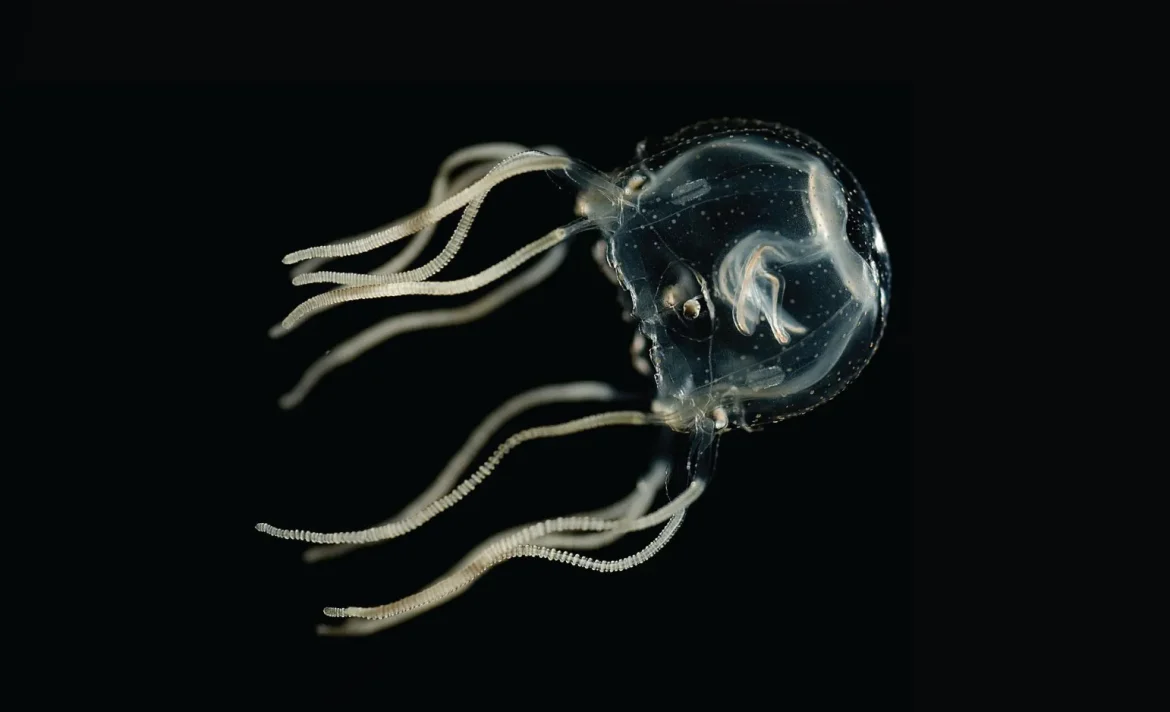In a rather interesting experiment that could be likened to the dictionary definition of futility, scientists tried to teach a certain species of box jellyfish known as Tripedalia cystophora a few basic tricks to investigate whether learning requires the presence of a brain.
“Learning is the pinnacle performance for nervous systems,” said Jan Bielecki, lead author of the study and a neurobiologist at the University of Kiel in Germany.
But what kind of nervous system are we talking about in this context? Octopuses manage quite competently without central gray matter masses (i.e. brains), relying on a network of about half a billion neurons scattered throughout their limbs to solve problems.
Even the periwinkle Aplysia californica has proven its capacity to learn with only 20,000 nerve cells.
As for jellyfish, T. cystophora is not completely devoid of intelligence. For example, the Rhopalia1Rhopalia in jellyfish is an important structure in the anatomy of jellyfish or sea turtles. Rhopalia are small, hairy appendages found especially on the bodies of jellyfish. These structures are located in the head region of the jellyfish and contribute to environmental sensing, hunting and locomotion. The four visual structures, called rhopalia, each consist of two eyes and about a thousand photoreceptors. These nerves function as both sensory systems and integration centers, converting stimuli into responses, which help box jellyfish find their way around in search of prey.

So what was the experiment like?
The challenge for the researchers was to find an everyday behavior that they could train these creatures to perform in a laboratory setting. Anders Garm, a biologist at the University of Copenhagen and co-author of the study, and his team found that the box jellies were attached to a mangrove root2“The term “mangrove” refers to species of trees and plants found in areas where seawater meets freshwater. These plants are specialized plants that can survive in saltwater conditions and are often found in marsh or coastal areas. Mangroves are considered important areas that protect coastal areas against erosion, provide important habitats for aquatic life and are often important areas for fishing. decided to focus on the quick course correction they make when they get close. These roots rise like dark towers in the water, creating a contrast with the paler water around them. But this contrast can change from day to day due to silt in the water, making it difficult for the box jellyfish to measure their proximity to the roots.
The hypothesis was that they need to learn this skill. When they return to these habitats, they probably need to adapt to changing water conditions and contrast. In the lab, scientists created images of alternating dark and light stripes lining the inside of six-inch-wide buckets, representing mangrove roots and water. When the stripes had a sharp black-and-white contrast that simulated ideal water clarity, the box jellyfish avoided colliding with the walls. But when the contrast was reduced, the box jellyfish began to bump into the walls. This was the researchers’ opportunity to test whether they could learn.
This jellyfish has no brain but can remember the past
After a few collisions, the box jellyfish corrected their behavior. In less than eight minutes, they began swimming 50 percent farther away from the striped pattern on the walls and increased the frequency of course correction maneuvers by almost four times. They seemed to associate the stripes with the sensation of collision.
“It’s surprising how fast these animals learn; it’s about the same pace as advanced animals are doing,” says University of Copenhagen marine biologist, Anders Garm.
“Even the simplest nervous system seems to be able to do advanced learning, and this might turn out to be an extremely fundamental cellular mechanism invented at the dawn of the evolution nervous system.”
The findings also suggest that box jellyfish may have a type of short-term memory that allows them to adapt their behavior based on past experiences. This raises questions about how long they retain their memories. For example, if they are removed from their environment for an extended period of time and then return, do they need to relearn their responses?
In future research, scientists hope to identify the specific cells responsible for the box jellyfish’s ability to learn from their experiences. Dr. Garm and his colleagues are interested in the molecular changes that occur in these cells as the animals incorporate new information into their behavior.
References: https://www.nytimes.com/2023/09/22/science/jellyfish-learning-neurons.html
https://www.cell.com/current-biology/fulltext/S0960-9822(23)01136-3


Leave a Reply